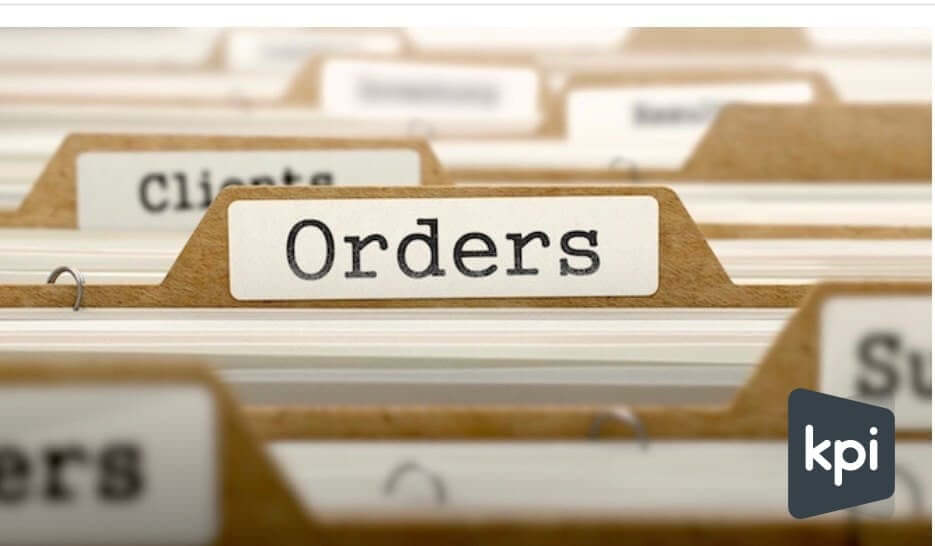What is the sales order?
A sales order is a document produced by the seller upon obtaining a purchase order from a customer specifying the details about the service or product along with quantity, price buyer details like the billing address, shipping address, terms and conditions and mode of payment.
In general practice, businesses follow the steps below.
- The seller sends a quote to the client.
- If it’s accepted, the customer sends the seller a purchase order.
- The seller generates a sales order depending on the purchase order.
- The customer might request a sales order to overview the exact details of the price, products, terms and delivery dates. Most businesses often skip the test.
- After the seller sends the products, they create an invoice from the sales order.
Difference between a sales order and a purchase order
The buyer sends a purchase order to the seller detailing the products to be bought, price, quantity, PO number, delivery and payment terms and shipping address.
The seller creates a sales order upon receipt of the purchase order.
The seller can input the data manually from the purchase order or automate it with a sales order automation software. Automation software will convert POs to SOs in one-click reducing costs, time and eliminating the room for error.
The importance of a sales order
Sales orders are necessary for inventory and order management systems. When a client sends you a purchase order or places an order on your e-commerce store, your business becomes obligated to fulfil the order.
A sales order provides you with information on your inventory. Whether the products are in livestock, if not how many are on backorder. This enables your purchasing department to make educated forecasts and purchase from your distributors.
Enter a sales order into your system instantly as possible. Do not make mistakes by utilizing the purchase order as a sales order since this will result in disorganization in the long run, not only with your purchasing section but also accounting.
The billing section refers to the sales orders to confirm related details and the authenticity of the sale and then produce invoices. Businesses have automated the generation of invoices by transferring sale orders to invoices. Misunderstandings in pricing and quantity in the sales order will lead to accounting errors. While reviewing a company’s financial statements, financial auditors often inquire about sales order documents. Working capital loans are also given depending on the confirmed sales order value of a business.
Benefits of sales orders
Minimize the work time
Paperwork is one of the most time-wasting tasks faced by sales teams. Sales order automation converts or imports purchase orders sent by buyers and create sales orders in your ERP systems which eliminate the re-entering of data from the purchase orders reducing time and effort considerably. A single entry in the system might be used by multiple departments like the sales team, warehousing, procurement, invoicing, accounting and customer service.
Enhance customer service
Your sales reps may have valuable information related to your customers at their fingertips as opposed to sifting through a ton of paperwork. Customer query redressal is quick and efficient. Sales order automation minimizes errors and inconsistencies related to customer orders and billing, leading to happier customers.
Scale-up and down easily
Sales order automation allows you to scale without worrying about capability or capacity. Therefore, when orders arise pouring in, you will be able to swiftly process them, without the need to improve your client staff instantly.
Process information from anywhere
Cloud-based applications enable you to manage data and access information from everywhere. Your sales reps can obtain information if needed on their sales calls; they won’t depend on internal sales reps for information. Clients will be happy with the efficiency and speed of your staff.
Sales Orders Reduce Errors
Sales orders are utilized by businesses to confirm that they’ve accepted a customer’s purchase order. The document includes specific details of the law so that the customer knows exactly what to expect. The sales order should dispose of misunderstandings about what is being delivered, when and for what price. If a buyer obtains a sales order and disputes any of the details, they can contact the business and resolve the problem before the order is received.
They Reduce Late Order Payments
By precisely detailing the price of an order and the payment terms, businesses also minimize the risk of late payments. Late payments may cause cash flow problems and disrupt business operations. But if customers know precisely what they are expected to pay and when they will be more probable to pay for the order instantly as they obtain the sales invoice.
Sales Orders Are Utilized to Produce Sales Invoices
Business accounting sections will use sales orders to produce sales invoices. Once the sales order has been delivered to the client, accounting teams can create a sales invoice to submit to the customer on delivery of the product or service.
Orders Are Prepared Using the Sales Order
The particular details included in the sales order will be utilized by businesses to prepare orders. Before the company picks and packs the ordered products, they will check the inventory. If there is not sufficient inventory, the sales order can be used to create a purchase order for the business’s supplier.
Sales Orders Can Be Financed
Sometimes, a business will obtain an order but will not have the funds or resources to fulfil it. Business finance solutions as Convertibill’s Order Finance can be used to fund the completion of the orders. Yet, before providing funds, finance providers will want to see either the purchase order or the sales order.
Conclusion
Sales order automation streamlines workflow and minimizes processing time, right from the moment of sale to confirmation to inventory management to delivery and long-term customer retention.
It decreases order processing times by 50%, that means that more orders can be processed in the same timeframe.
The right sales order processing software may take your business places.
